
Holidays are a complex and sensitive time for foster children. This season can be both a joyful and challenging time for foster children, as they often carry emotional sensitivities due to experiences of past family separation and trauma. These emotions can surface during holidays, requiring extra sensitivity and awareness from caregivers. Here are some important considerations to keep in mind. Open communication with foster children around the holidays is imperative for creating a supportive environment. A foster child that feels heard feels valued and understood, so a caregiver should be open to discussing the plethora of feelings that the foster child may experience. Foster youth could be excited about gifts, special meals, and spending time with family, but also feel anxious about being away from their biological family and familiar surroundings. If foster children had negative experiences during past holidays, they might feel apprehensive about repeating those experiences or encountering similar challenges. Cultural diversity and religious diversity play significant roles in the lives of foster children, influencing their identity, experiences, and overall well-being. Holidays might trigger questions about who they are and where they fit in. They might struggle with how to integrate their own heritage or religion into the foster/resource family’s celebrations. Respecting and integrating their unique traditions into holiday celebrations is essential, and can contribute to a sense of inclusivity and belonging. Before anything kicks off, it can be incredibly beneficial to let them know what is about to happen and who they will meet. As a foster parent, while you may be used to the hustle and bustle of a relative’s house or the behavior of a loved one, such a situation will all be new and overwhelming for a foster youth. Beforehand, let them precisely what to expect and what will likely happen, so they are not caught off guard. Talk about your traditions and holiday plans, and allow the child to decide whether to participate, if possible. A foster child's holiday expectations might differ from those of their peers. Maybe they have not always gone to church on Christmas Eve or walked the neighborhood caroling, but you have. Let them know you would love them to join you for these activities, but be understanding if they opt out. If the child shares one of their traditions, incorporate it into your holiday festivities. Inclusive celebrations are vital. If everyone has a stocking, make sure there is one for the foster child. Establishing new traditions can create positive memories for foster children and their caregivers. Similarly, be sure others you’re celebrating the holidays with know about the foster youth and are not surprised by their presence. Recruit those you’re spending the holidays with to do what they can to welcome and include foster youth as much as possible in the festivities. As a foster parent, do not try to handle everything alone. Reach out to family and friends for help with tasks around the house. Ask dinner guests to bring a side dish or dessert. You also have a team of trained and experienced professionals on your side, such as social workers and therapists. They may have insights into the child's coping strategies and therefore can offer assistance and support navigating the holiday season with them. Remember that self-care is not selfish—it is essential. Caregivers should prioritize self-care during the holiday season, recognizing the potential stress involved. Do not put too much pressure on yourself to create a "perfect" holiday experience. Understand that things might not go exactly as planned, and that is okay. Be sure to get enough sleep, eat healthy and take some “me time” for your own interests, whether it’s reading, soaking in a bath or getting in a good workout. Every foster child is unique, and their reactions to holidays will vary. There is no one-size-fits-all answer. The key is to approach the holiday season with empathy, patience, and a willingness to understand and meet the individual needs of each foster child in your care.

Holiday shopping can be one of the most financially stressful times, but with some careful planning and budgeting, you can make sure you don’t overspend, or overstress. Here are some financial tips to help you stay on track during the holiday season. First, make a list of everyone you need to buy gifts for and set a spending limit for each person. Stick to this budget and avoid overspending by doing your research ahead of time. Look for sales and discounts, and consider buying gifts in bulk to save money. Warehouse stores, like Costco and Sam’s Club, usually have some good deals on gifts during the holiday shopping season. In addition, nothing beats the savings you can score on Black Friday (the day after Thanksgiving), so make sure to do some research ahead of time to secure the best deals. Most deals are available online as well, allowing you to shop from more stores than you could if you had to go in person. Second, consider alternative gift options that won’t break the bank. Handmade gifts or experiences, such as tickets to a show or a dinner out, can be more meaningful than a store-bought gift and will likely be appreciated just as much. Websites like Pinterest, or Instagram, can be great for finding gift inspiration and/or craft tutorials. Moreover, if you don’t consider yourself very crafty, you can always shop at Etsy.com and purchase some handmade goods that others have made, but be warned that this could get pricey. Third, use credit cards wisely. If you do use a credit card for holiday shopping, make sure to pay off the balance in full each month to avoid accruing interest charges. Additionally, consider using a credit card with rewards points that you can redeem for cash back or other rewards. Finally, do not forget about the other expenses that come with the holidays, such as travel, decorations, and food. Set a budget for these expenses as well, and stick to it. With some careful planning and budgeting, you can enjoy the holiday season without breaking the bank. Make a list, set a budget, consider alternative gift options, use credit cards wisely, and remember to budget for all holiday expenses. Happy shopping!
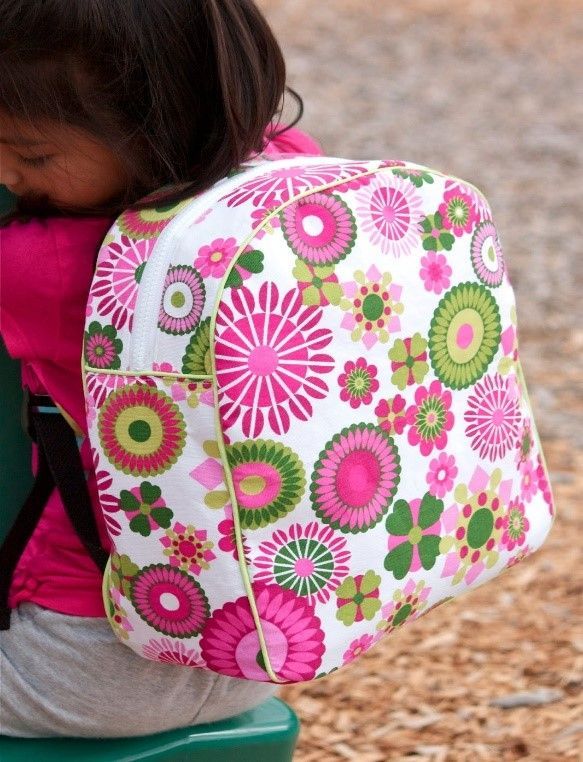
To help make parent-child visits more meaningful, foster parents can provide a backpack or bag the child can use to share with their parents those special things that have happened since the last visit. Between visits, the child can be encouraged to put things into the “Happy Pack” that he or she is excited to share with their parents. Examples of what might be in a pack: A favorite book A note that captures something cute or funny the child has said New words the child is saying, if it’s a younger child A picture the child drew or colored A note from the child’s teacher or an assignment the child is proud of A snapshot of the child doing a favorite activity A letter the child has written to his or her parents Whenever something comes up that children may want to share with their parents, encourage them to put it into their Happy Pack. This gives parents a place to start their visits—it lets them know what their child has been doing since the last visit. It also allows parents to feel more involved in their child’s life. In addition, the child will be very proud and excited to share their Happy Pack!

The ghosts and goblins are put away and all of the trick-or-treating is piled into a large bowl with the left over candy that no one likes. Immediately from one day to the next, the radio went from playing “Ghostbusters” and “Thriller” to “All I want for Christmas is You” and you think…..it’s the best time of the year! But for children in foster care, it not always is. Children in foster care may have come from homes where there was no Christmas, no grand feast, no stockings, no presents, no tree. This could be because there was not enough money to provide these surprises, or no one to provide the surprises for them. The holidays, whether they be Thanksgiving, Christmas, Hanukah, Kwanza, or New Years, do not always bring thoughts of joy and excitement, but rather trigger their feelings associated with not being with their families, which could look like sadness, grief, anger, or resentment. Having the ability to recognize these feelings will help you understand how to help them. Better yet, having a conversation with them before the holidays approach of what the holidays mean to them and learning what the holidays looked like in their family, will help you to plan and adjust your holiday celebrations or traditions so that they feel involved and comfortable rather than overwhelmed. Here are some tips from www.justasspecial.com Navigating the Holiday: A Guide for Foster Parents and www.kidscounttoo.com Helping Foster Youth Through the Holiday Season. Talk to Foster Youth Before the Holiday Celebrations Begin: Before any holiday celebrations begin, it can be helpful to let your foster youth know what the holidays look like for your family or in your home, what, and who they should expect. As an adult and parent, you may be used to the hustle and bustle of the holiday gatherings or the specific behaviors of loved ones; however, these situations will all be new and can be quite overwhelming for a foster youth. Talking with them in advance will give them time to anticipate the upcoming holiday celebrations and provide them time to think and prepare. Similarly, be sure others you are celebrating the holidays with are aware of the foster youth in your home and are not surprised by their presence. This can help to minimize awkward situations such as needing to scramble to set an extra place at that table, which can make them feel like an imposition right from the start. It will also eliminate awkward but reasonable questions such as “who are you?” In addition, keep in mind confidentiality rules regarding foster youth. It is common to celebrate the holidays with those who you have not seen in a while and so it is best to have conversations with your family, extended family, and friends ahead of time about your fostering journey and that you will have some additional youth present at the holidays. Assist them with what they can do to welcome and include your foster youth during the festivities, without overdoing it. Get Rid of Expectations Probably easier said than done, but try not to have any expectations. The holidays can bring out sadness and big behaviors for foster youth and they may be excited about doing all the family activities you have shared, but feel sad the day of, because they are away from their biological family. They may prefer to spend a holiday with their biological family; a friend/mentor; or a former foster family/caregiver. If it is approved and safe, allow them to do so - and offer to also celebrate with them on another day. Create time for self-care so you can re-charge and recalibrate and have the capacity to deal with your own disappointments and triggers. Ask for Input Giving foster youth a say in how you celebrate the holidays can make them feel valued — rather than forgotten amidst the bustle — and increases the chances of their participation in family activities. This also helps them know what to expect well in advance which can help dissipate anxiety. Make participation in all of your family traditions optional, but also ensure they have a warm invitation to join you. Ask for help creating some new family traditions. Ask if they would like to share some of their family traditions that you can do together. When creating plans, invite them to share their feedback and whether they are interested in joining. Ask in advance what they need to feel comfortable participating in any holiday activities. Ensure you allow them the opportunity to take part in any of their cultural and religious practices. Don’t Ignore Their Feelings or Mental Health As we have already established, the holiday season can be a conflicting and emotionally draining time for many foster youth. It may bring out new feelings or behaviors and may exacerbate existing ones. Understand that foster youth often have a lot of process year-round, but even more so during the holidays. Respect their mental health, know that their feelings about the holidays can be complex, and provide help if asked for if it is required. Don’t Make them Feel Unequal or Unwelcomed During the holiday season, many foster youth feel like outsiders or like a burden to your family. Foster parents should try to take steps both big and small to ensure foster youth are completely and totally welcomed as an equal part of the family, while always being sure to validate their emotions, no matter what. This can look like purchasing the same amount or value of presents for all children in the family, having a matching or similar initialed stocking hung for them along with the other family members stockings, and offering to include them in every tradition, despite their age but allowing them the choice to participate or not. Gift Giving: For many youth in foster care, receiving gifts can be overwhelming as they may have never experienced gift receiving before. Consider allowing these them the option to open gifts in private or focus on giving experiences rather than tangible gifts. On the other end of the spectrum, some youth in foster care may seem to only care about tangible gifts and not care about building relationships. For these youth, consider gifts that create the opportunity for interactions such as crafts or games. Ask the youth about a gift they have wanted for a while but never got — and then try to get these gifts regardless if they are “too old for them” by societal standards. Receiving these gifts after so long can be a healing experience for youth in foster care. One good idea when it comes to family gift giving, is to have extra presents ready to help offset differences that might happen. You should not expect all relatives to purchase gifts for your foster youth, so it might be best to be prepared by bringing extra small gifts, If you happen to have a family member that shows concern over not having bought a gift for one of your foster children, you can offer them one of your “backup” gift to put under the tree. Connection With Others For many, the holidays do not stop and end at family. Often, a wider community will be on hand in festivities and in making the holiday what it is. Foster parents should aim to include this wider community and make the extra effort to have your foster youth connect with these individuals in whatever way possible and permissible. Connecting with these important people can take many forms if in-person visits are not an option including: Scheduling a Zoom or phone call Dropping-off or mailing gifts Helping them send photos, letters, or holiday cards It can be hard to add time for these activities around a hectic holiday schedule, but going the extra mile to ensure these kids have connection with loved ones is important. Incorporate Their Traditions and Customs No two families celebrate the holidays in the exact same way. While certain traditions are certainly more common than others are, everyone has their own unique spin to the holidays- and the families foster youth come from are no different. Have a discussion with them about how they usually celebrate and how you and your family celebrate. Let your foster youth know which of the traditional holidays your house recognizes. Is it Thanksgiving? St. Nick’s Day? Kwanzaa? Hanukah? Christmas? New Years? Or all of the above. If possible, incorporate some of their traditions to make them feel welcome, included, and accepted in your holidays. The smallest things can sometimes make the biggest differences. In addition, please remember to respect that foster youth may celebrate holidays you do not, and vice versa. In conclusion, the holiday season can be a very busy time of year for you and your family. The same can be said for foster youth, more so in the sense that it is an emotionally busy time for them, that they may have difficulty understanding and controlling. Be present for them, be cognizant to their revolving feelings, be supportive, and be inclusive at their level. Overall, enjoy your time with them whether it be sharing each other’s traditions or beginning new ones.

Seasonal affective disorder (SAD) is depression tha t happens only at a certain time of year. With SAD, kids and teens tend to become depressed in fall or winter, when days are shorter and it gets dark earlier. Once the daylight hours grow longer again, symptoms go away. What Are the Signs & Symptoms of Seasonal Affective Disorder (SAD)? As with other kinds of depression, SAD can lead to: Changes in mood. Someone may feel sad or be cranky, discouraged, or hopeless. They may also cry a lot or get upset easily. Negative thinking. Kids and teens may be harder on themselves or more sensitive to criticism. They may complain or blame others more often than usual. They may also think nothing will get better. Low energy. Someone with SAD may be tired or lack energy. Things can seem like they take too much effort Changes in sleep. Kids and teens may sleep a lot more and have trouble getting up for school. Changes in eating. Kids and teens may crave less healthy foods like chips or sugary snacks and overeat. This can lead to weight gain. Or they might not feel hungry and eat less. Trouble focusing. Like any depression, SAD can make it hard to focus, which can harm schoolwork and grades. Kids may also feel tense, restless, or fidgety. Suicidal thoughts . Some one with SAD may have thoughts of death, not wanting to live, or hurting themselves. These symptoms tend to happen only during the time of year when there are fewer hours of daylight. As the season changes and days become longer again, kids and teens with SAD will have higher energy levels and a better outlook. What Causes Seasonal Affective Disorder (SAD)? The exact cause of SAD isn't clear, but some kids' and teens' brains react differently to fewer hours of daylight. Daylight affects two chemicals in the brain: serotonin and melatonin. When it’s sunny, the brain makes more serotonin. High levels boost feelings of happiness and well-being. Low levels lead to depression. When it’s dark, the brain also makes more melatonin. High levels cause you to feel sleepy and have less energy. Shorter days and more hours of darkness in fall and winter may decrease serotonin and increase melatonin. This makes depression more likely to happen. How Is Seasonal Affective Disorder (SAD) Diagnosed? Talk with your doctor if you think your child has SAD. Doctors diagnose it by asking questions and listening. A health checkup can see if the symptoms are due SAD or something else. How Is Seasonal Affective Disorder (SAD) Treated? If a child or teen is diagnosed with SAD, the doctor may recommend one or more of these treatments: More Light Exposure Spending more time outside during daylight hours is often enough to improve SAD. Taking a daily walk or getting other exercise outdoors are ways to do this. Full-spectrum (daylight) bulbs that fit in regular lamps can help bring a bit more daylight into winter months and might help mild symptoms. Light Therapy (Phototherapy) This therapy may help treat more severe symptoms. With a special lightbox or panel on a table or desk, the person sits in front of it for about 45 minutes a day. Symptoms tend to get better within a few days or weeks. The person will likely use the box until there’s enough sunlight outdoors again. Talk Therapy Talking with a therapist c an help kids and teens work through negative thoughts and feelings that happen with depression. It can also help them understand SAD and learn how to prevent it. Cognitive behavioral therapy (CBT) is one of the common and helpful types of therapy for depression. Medicine Doctors may prescribe medicine like an antidepressant, which can help balance chemicals in the brain. How Can Parents Help? If your child or teen is diagnosed with SAD, start by talking about it. Ask your doctor how you can be supportive. You also can: Encourage your child to get plenty of exercise, especially outdoors. Spend time together in ways that don't require much energy, like watching a movie. Be patient because it may take time for symptoms to improve. Help organize homework. You can also ask teachers for extra time for assignments. Try to serve lots of whole grains (like whole-wheat bread, brown rice, and oatmeal), vegetables, and fruit. Limit less healthy things like white bread, sugary snacks, and soda. Have your child go to bed and get up at the same time each day to get the most daytime light. If your child or teen has SAD, explain that it’s seasonal. So. even though it could happen each year, there are things that help if it does. Talk about how SAD will get better, even though it may seem hard right now.
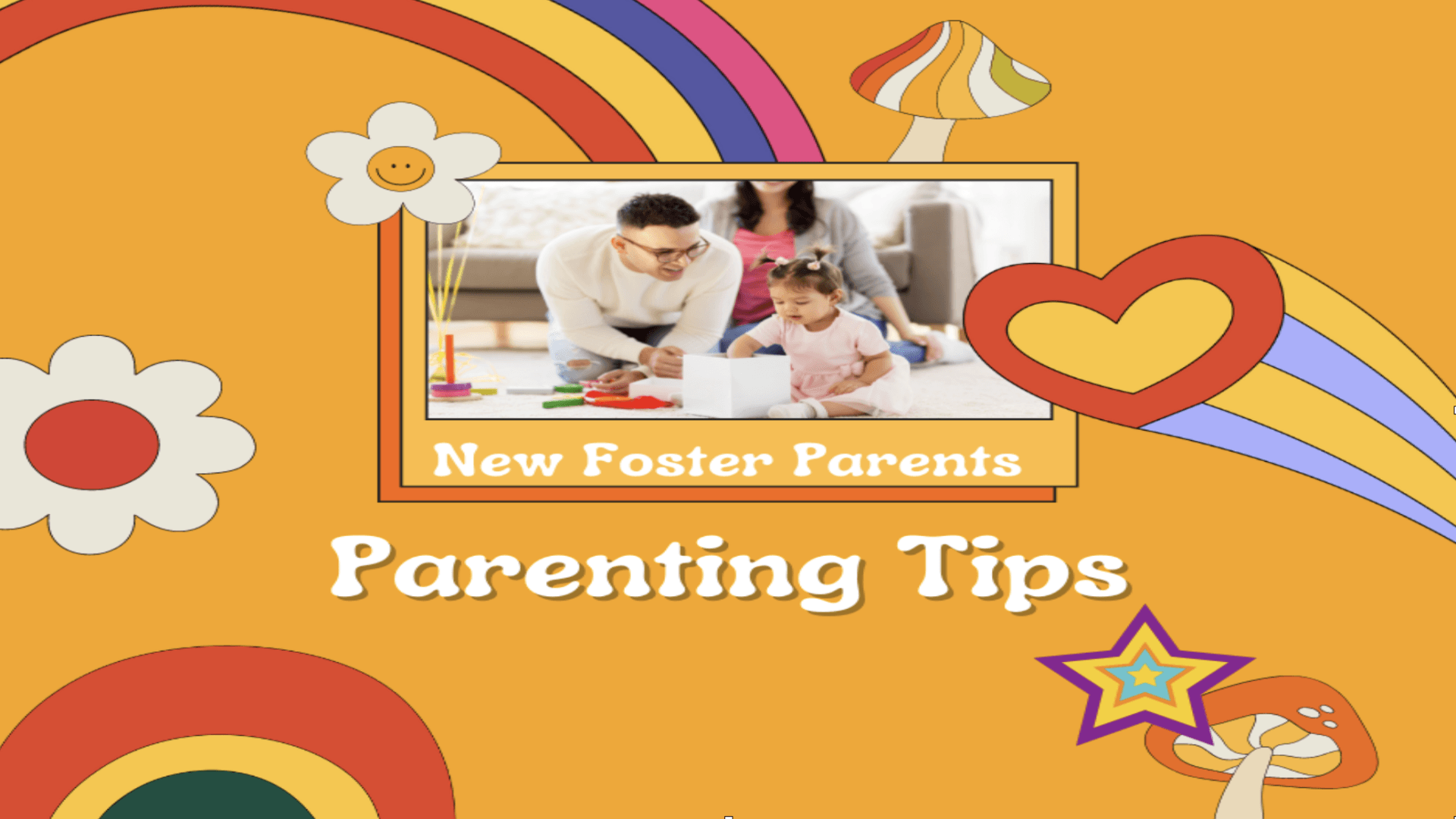
Kids are moody. One moment, they may get happy over a small thing, and the next moment, they may throw a tantrum for no reason. If your kid also has his share of meltdowns, you need not punish him to discipline him. Parents should never adopt negative or stringent ways to discipline their kid. It is imperative to teach the value of discipline to a growing child, but not at the cost of being harsh on him. Why Negative Discipline is Harmful? All children depend on their parents for emotional support and love. However, when parents use various hurtful ways of disciplining their ch ild, it fiddles with their psychological, emotional, and physical well-being of the child. In other words, it can have damaging effects on the growth and development of the child. Some of the methods that you must avoid to save your child from the negative effects of discipline include: 1. Shouting You should not shout at your child because when you shout at your little one, he may not be able to understand what you want from him or what you intend him to do. On the contrary, your child may get scared and may even feel ashamed for his actions. Talk to him politely instead, tell him what he did wrong and help him correct it. 2. Emotional Blackmailing Getting things done from your child by emotionally blackmailing him is not a good technique of parenting. This way your child may find it hard to trust or believe you. 3. Humiliating Your Child in Public Whenever you scold or shout at your child in front of your family members, friends, or relatives, you insult your child in front of everyone. This may shake his self-respect a nd self-confidence . 4. Sending Your Child On Guilt Trips Making a statement or saying hurtful words to make a child feel guilty for his actions may not be good for his self-worth. This way your kid may become resentful and may find himself engulfed in the vicious cycle of guilt. 5. Being Sarcastic Sarcasm may not be a good way of disciplining a child. Little ones don’t get sarcasm and the older ones may feel hurt and may take your sarcastic comment to heart. They may also isolate themselves from you slowly. Furthermore, your child’s self-esteem may also be affected negatively. Hence, it is suggested that you watch what you speak. 6. Physical Violence Physical abuse of any kind not only causes physical hurt and trauma to a child but it also affects the child emotionally. If you want your child to grow up into a kind person and remember his childhood happily then never use physical abuse to discipline your child. Physical violence is never an option for anything. 7. Commanding Your Child Your child is not a slave of yours to order him around. Yes, you want him to respect elders and do as he is told, but there’s a way to get things done. Forcing your child to do something will instill fear in him and he may not come to you. Unreasonable commanding parenting style may make your child feel suffocated and helpless. You may ask your child to do the exact same things in a loving manner. 8. Being Distant or Cold In order to punish your child for his mistakes, you may act distant or become cold towards him. But this technique of discipline should never be adopted as young children are dependent on their parents for emotional support. Acting cold to your kid may shake his trust and he may distant himself from you. 9. Threatening Asking your child to do a certain thing by threatening him is also a negative way of disciplining your child. This way you scare your kid. If you threaten your kid, he will be under the constant fear of consequences of his actions. 10. Abusive Language You should not use abusive words or language for your child. Verbal abuse is no less than physical abuse and can have the same ill-effects on the child. The use of inappropriate words, curse words or slang should be avoided when you are with your child. All parents wish to inculcate and imbibe good habits and virtues in their children. However, using wrong means like adopting negative ways of disciplining is not considered a healthy practice and may harm the child physically and emotionally.

Approximately 170,000 children, youth, and young adults ages 10 to 20 are in foster care in the United States. Youth who identify as lesbian, gay, bisexual, transgender, questioning, or other diverse identity (LGBTQ+) are overrepresented in foster care with at least three studies estimating about 30 percent of youth in foster care identify as LGBTQ+. This percentage could be underreported as youth who come out often risk harassment, rejection, abuse, or abandonment from their families or care providers. Some LGBTQ+ youth enter the child welfare system for the same reasons that other children and youth enter care, which are reasons unrelated to the youth’s identity or behaviors. Other youth; however, are rejected and in some cases, neglected or abused by their families of origin when learning that they identify as LGBTQ+. Many youth are rejected because their birth and resource families’ religious beliefs and attitudes towards LGBTQ+ community create abuse and safety issues. “(As cited in Child Welfare Information Gateway, Supporting LGBTQ+ Youth: A Guide for Foster Parents, June 2021)”. According to a case study by The Williams Institute, UCLA School of Law, found that LGBTQ+ in foster care were 1.5 to 2 times more likely to experience frequent placement disruptions, homelessness, and other factors that lead to poor permanency outcomes compared with LGBTQ+ youth living outside of foster care. The good news is that rejection, maltreatment, and other traumas can be mitigated by foster and adoptive families who acknowledge, respect, and support LGBTQ+ youth in ways that nurture and protect the health, safety, and well-being of these young people. When child welfare agencies identify and ensure access to foster homes that provide stable, supportive, and affirming families for LGBTQ+ youth, these youth can develop the strength and self-confidence they need to become successful adults. “(As cited in Child Welfare Information Gateway, Supporting LGBTQ+ Youth: A Guide for Foster Parents, June 2021)”. As a resource parent, it is highly crucial to provide an open, non-judgmental, nurturing, and supportive home environment for all youth you take into care. This is especially so for youth who identify as LGBTQ+ and allowing them the ability, freedom and comfort level to express themselves or explore their gender identity and expression. Some ways, “(As cited in Child Welfare Information Gateway, Supporting LGBTQ+ Youth: A Guide for Foster Parents, June 2021)”, you can implement support in your home and in your relationships with the youth are: Make it clear that slurs or jokes based on sex assigned at birth, gender expression or identity, or sexual orientation are not tolerated in your house. Express you disapproval of these types of jokes or slurs when you encounter them in the community or media. Display “hate-free zone” signs or other symbols indicating an LGBTQ-affirming environment. Use gender-neutral language when asking about relationships. For example, instead of, “Do you have a girlfriend? Ask, “Are you dating anyone?” Celebrate diversity in all forms. Provide access to a variety of books, movies, and material, including those that positively represent same-gender relationships. Point out LGBTQ+ celebrities, role models who stand up for the LGBTQ+ community and people who demonstrate bravery in the face of social stigma. Let youth in your care know that you are willing to listen and talk about anything. Support their self-expression through their choices of clothing, jewelry, hairstyle, friends, and room decoration. Insist that other family members include and respect all youth in your home. Allow youth to participate in activities that interest them, regardless of whether these activities are stereotypically masculine or feminine. Educate yourself about LGBTQ+ history, issues, and resources. Here are some great resources and reads that focus on the LGBTQ+ community and ways you can educate yourself, support, and/or advocate: https://www.childwelfare.gov/pubpdfs/lgbtqyouth.pdf https://www.air.org/sites/default/files/A_Guide_for_Understanding_Supporting_and_Affirming_LGBTQI2-S_Children_Youth_and_Families.pdf https://www.hrc.org/news/5-things-you-can-do-today-to-support-lgbtq-youth https://www.youtube.com/watch?v=fyXRwX3aeOU https://www.hrc.org/resources/glossary-of-terms https://www.lambdalegal.org/know-your-rights/article/youth-glossary-lgbtq-terms https://pflag.org/glossary https://www.thetrevorproject.org/
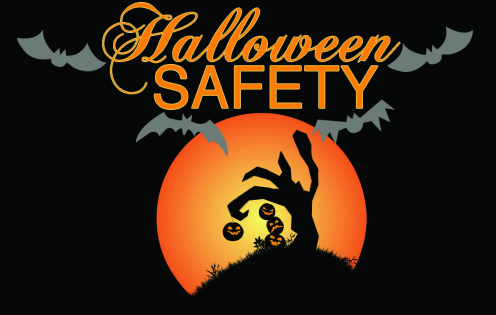
Halloween is a time for spooky thrills and imagination. However, the holiday also brings some extra risks for children and teens. Did you know that child pedestrian injuries are more likely on Halloween than on any other night of the year, for example? Help keep Halloween fun and safe for your family with these tips. Safety on the trick-or-treat trail. Always accompany young children on their neighborhood rounds. If trick-or-treating doesn't start until after dark where you live, consider checking with your town or park district for Halloween activities offered earlier in the day. Research sho ws that evenings from 6 p.m. to 9 p.m. are the riskiest times of day for child pedestrians. If your older children are trick-or-treating alone, plan and review the route that is acceptable to you. Agree on a specific time when they should return home and get flashlights with batteries for everyone. Talk with kids about the risk of distracted walking. This includes text messaging, talking on or looking at the mobile phone and listening to music. Cross the street as a group in established crosswalks. Most (62%) child pedestrian traffic fatalities occurred mid-block, rather than at intersections. Make sure kids know not to cross the street between parked cars or out of driveways or alleys. Don't assume cars will stop just because they have the right of way. Motorists may have trouble-seeing trick-or-treaters. Stay on well-lit streets and always use the sidewalk. If no sidewalk is available, walk at the far edge of the roadway facing traffic. Only go to homes with a porch light on and, ideally, a well-lit pathway. Older children should travel in groups and create a "buddy system" to get each other home safely. Caution kids never enter a home or car for a treat. Notify law enforcement authorities immediately about any suspicious or unlawful activity. Review with children how to call 9-1-1 (or their local emergency number) if they ever have an emergency or become lost or is prone to wander . A message to parents of teen drivers Before you let your child drive on Halloween, take precautions and set specific rules. Use our Parent-Teen Driving Agreement . Preparing your home for trick-or-treaters Remove tripping hazards to keep your home safe for visiting trick-or-treaters. Keep the porch and front yard clear of items such as garden hoses, toys and bikes. Check outdoor lights and replace burned-out bulbs. Sweep wet leaves from sidewalks and steps to prevent anyone from slipping on them. Restrain pets so they do not jump on or bite a trick-or-treater. Children & dog bites Children are the most common victims of dog bites, and also most likely to be severely injured. Teach your child never to pet a dog without asking permission first. Find more dog bit prevention t ips here . Costume safety tips Plan costumes that are bright and reflective. Consider adding reflective tape or striping to costumes and trick-or-treat bags for greater visibility. Make sure that shoes fit well, and that costumes are short enough to prevent tripping, getting caught on objects or coming into contact with firepits. Look for "flame resistant" on the costume labels. Wigs and accessories should also clearly indicate this. Hats should fit properly to prevent them from sliding over eyes and blocking vision. Consider non-toxic makeup and decorative hats as safer alternatives to masks. Makeup should be tested ahead of time on a small patch of your child's skin to ensure there are no unpleasant surprises or allergic reactions on the big day. Toxic ingredients have been found in cosmetics marketed to teens and tweens. Avoid any sharp or long swords, canes or sticks as a costume accessory. Your child can easily be hurt by these accessories if he or she stumbles or trips. Do not use decorative contact lenses without an eye examination and a prescription from an eye care professional. While the packaging on decorative lenses will often make claims such as "one size fits all," or "no need to see an eye specialist," getting decorative contact lenses without a prescription is both dangerous and illegal. This can cause pain, inflammation and serious eye disorders and infections, which may lead to permanent vision loss. Pumpkins & decorating safety Never allow small children to carve pumpkins. Children can draw a face with markers. Parents can do the cutting and then let little ones clean out the inside pulp and seeds. The American Society for Surgery of the Hand offers safe carving tips. Consider using a flashlight or glow stick instead of a candle to light your pumpkin. If you do use a candle, a votive candle is safest. Do not place candlelit pumpkins on a porch or any path where visitors may pass close by. They should never be left unattended. Healthy Halloween Give your child a good meal prior to parties and trick-or-treating; this will discourage filling up on Halloween treats. Consider offering non-edible goodies to trick-or-treaters. Halloween is one of the trickiest days of the year for children with food allergies . Food Allergy Research & Education's Teal Pumpkin Project suggests items such as glow sticks, spider rings, vampire fa ngs, pencils, bubbles, bouncy balls, finger puppets, whistles, bookmarks, stickers and stencils. Wait until children are home to sort and check treats before eating them. Though tampering is rare, it can happen. A responsible adult should closely examine all treats and throw away any spoiled, unwrapped or suspicious items. Keep an eye on what your child has in their mouth at all times while on the trick-or-treat trail. Once your child is ready to enjoy treats at home, keep in mind that babies and toddlers should not have any hard candies, caramel apples, popcorn, gum, small candies (jellybeans, etc.), gummy candy, pumpkin seeds or anything with whole nuts. Candy wrappers, stickers, small toys or temporary tattoos can be a choking hazard , as well. As all parents know, babies and toddlers will put just about anything into their mouths! Try to ration treats for the days and weeks following Halloween. If you keep candy guidelines realistic, consistent and positive, your Halloween is less likely to be about arguing or controlling candy. Make a plan together so everyone knows what to expect. It's also a great opportunity to teach your kids about moderation, balance and healthful indulging.
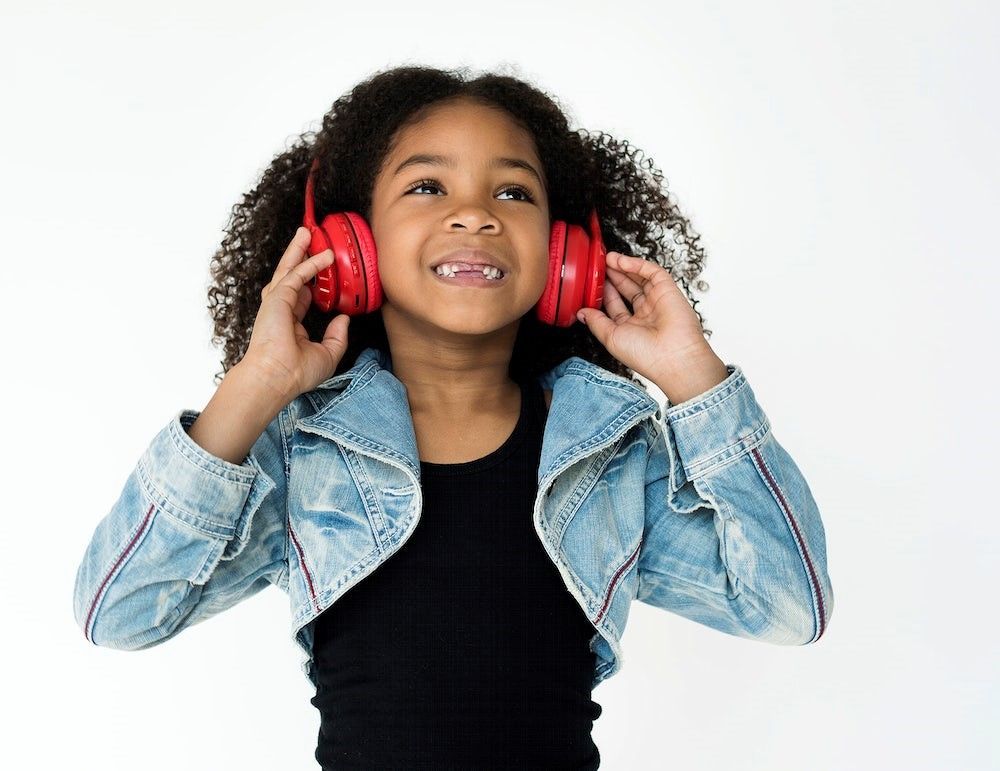
Music has this amazing power to captivate us and make us feel all sorts of emotions. When it comes to children in foster care who have been through tough times, musical play becomes even more important. It has a special significance because it helps these kids heal and grow in a positive way. When it comes to child development, musical play can be an impactful technique for growth and healing. Music has a way of captivating our senses and stirring emotions within us. In the case of children in foster care, who have experienced disruption and trauma, musical play takes on a special significance. Here, we will explore the benefits of musical play in encouraging the healthy development of children in care, providing them with a nurturing and transformative experience. What is musical play? Musical play refers to the engaging and interactive exploration of music through various activities such as singing, dancing, playing instruments, and creating rhythms and melodies. Similar to play therapy, it encourages children to actively participate, express themselves creatively, and develop a deeper connection with the world of music. Emotional Expression and Regulation Music has a unique ability to evoke and channel emotions. For children in foster care who have faced significant trauma, expressing and regulating emotions can be challenging. Musical play provides a safe space for them to express feelings whether through singing, creating music or dancing. It allows them to release pent up emotions, find comfort, and develop emotional resilience. How can musical play help children in foster care? Musical play holds a lot of potential for positively influencing the lives of children in foster care. Self-expression and empowerment: Musical play allows children to express themselves freely, helping them find their voice and assert their identity. Through singing, playing instruments, and creating music, children can tell their stories, share their experiences, and celebrate their uniqueness. This empowers them with a strong sense of self-esteem and personal growth. Building trust and attachment: The interactive nature of musical play creates opportunities for connection and trust building. Engaging in musical activities with caregivers and peers builds a sense of safety and security. It helps children in foster care develop positive relationships and build healthy attachments, which are crucial for their emotional well-being and overall development. How does musical play work? Musical play therapy contributes towards child development through various ways. Emotional Engagement Music has a direct impact on our emotions. It can evoke joy, sadness, excitement, or calmness. Through musical play, children in foster care can explore and express their emotions in a safe and non-threatening way. The melodies, rhythms, and lyrics allow them to connect with their feelings and experience a range of emotions, promoting their emotional well-being and helping them process their experiences. Sensory stimulation Musical play engages multiple senses simultaneously. Listening to music, feeling the vibrations of instruments, and participating in rhythmic movements activate the auditory, tactile, and kinesthetic senses. This sensory stimulation enhances sensory integration, promoting coordination, balance, and fine motor skills development. Neurological activation Engaging in musical play activates various areas of the brain. Playing instruments, singing, and listening to music stimulate neural connections, promoting brain development and cognitive abilities. The brain's response to music enhances memory, attention, and pattern recognition, fostering cognitive growth and intellectual skills. 5 types of musical play techniques There are several techniques and activities that can be incorporated into musical play, but what is important to remember is that musical play does not have many rules. It is there to help children feel connected to the moment while simultaneously boosting their self-esteem and promoting healthy development. Singing Singing is a fundamental and very accessible form of musical play. You can sing anywhere you like, all year round! Children can sing along to familiar songs or learn new ones. Singing helps with language development, vocabulary expansion, and self-expression. It can be done individually or in groups, providing opportunities for social interaction and building confidence. Why not have a sing-along to your foster child’s favorite songs and enjoy a therapeutic release of emotions while making happy memories? 2. Instruments Providing children with access to various musical instruments allows them to explore different sounds and textures. They can experiment with percussion instruments like drums or xylophones, or try their hand at string or wind instruments. Instrument exploration enhances fine motor skills, hand-eye coordination, and processing sounds, which can also be extremely beneficial for autistic children . 3. Movement and dance Bringing movement and dance into musical play encourages physical activity and self-expression. Children can sway, jump, or dance to the rhythm of the music. This not only enhances gross motor skills but also allows them to release energy, improve coordination, and experience the joy of dance, because everyone loves a boogie from time to time! 4. Songwriting Encouraging children to create their own songs is a powerful form of musical play. They can write lyrics, invent melodies, and experiment with different musical elements. This activity promotes creativity, self-expression, and fosters a sense of ownership and accomplishment. 5. Music listening and reflection Listening to different genres of music and reflecting on how the songs make you feel can be a valuable aspect of musical play. Children can discuss their Interpretations, share their feelings, and connect with the music on a deeper level. This activity promotes active listening, critical thinking, and emotional engagement. In child development, musical play shines as a transformative force, particularly for children in foster care who have experienced a lot of anguish in their early lives. By engaging in musical play, these children can express their emotions, develop cognitive and social skills, experience healing, and find empowerment.
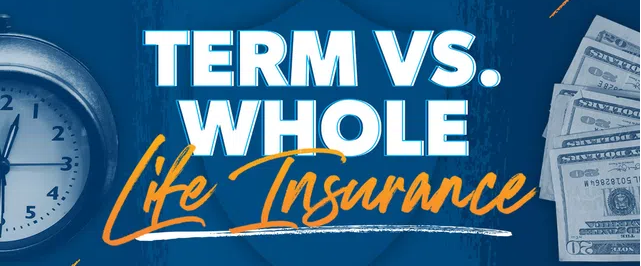
Life insurance is a crucial aspect of financial planning that everyone should consider. It provides a safety net for your loved ones in case the unexpected occurs. There are several types of life insurance plans available, each with their own unique features and benefits. Two of the main types are term life and whole life. Term Life Term life insurance is one of the most popular types of life insurance policies available. It provides coverage for a specific period of time, usually ranging from 10 to 30 years. One of its main benefits is affordability. Compared to other types of life insurance policies, term life insurance is relatively inexpensive. This makes it an ideal option for individuals who need coverage but have a limited budget. In addition, term life insurance is easy to understand and purchase. There are no complicated investment options or cash value components to consider. It simply provides a death benefit to your beneficiaries if you pass away during the term of the policy. Another advantage of term life insurance is that it can be tailored to meet your specific needs. For example, you can choose the length of the policy and the amount of coverage you need. This flexibility allows you to customize your policy to fit your individual circumstances. However, one of the main drawbacks is that it only provides coverage for a specific period of time. Once the term of the policy has expired, you will need to purchase a new policy if you want to continue coverage. This can be a disadvantage if you develop health issues or other factors that make it difficult to obtain coverage in the future. In addition, term life insurance does not build cash value. Unlike other types of life insurance policies, term life insurance does not provide an investment component. This means that you will not be able to borrow against the policy or use it to generate income in retirement. Whole Life Whole life insurance is a type of insurance policy that covers the policyholder for their entire lifetime as long as they pay their premiums. One of its most significant benefits is that it provides lifelong coverage, which means that the policyholder is protected for their entire life. Additionally, whole life insurance policies have a cash value component, which means that a portion of the premium is invested and accumulates over time. The cash value can be withdrawn or borrowed against, providing the policyholder with additional financial flexibility. Moreover, whole life insurance policies have a guaranteed death benefit, meaning that the beneficiaries will receive a payout regardless of when the policyholder passes away. However, the premiums for whole life insurance are typically higher than those of other types of insurance policies. This is because whole life insurance policies provide lifelong coverage and have a cash value component. Additionally, the investment component of the policy may not generate significant returns, making it less attractive as an investment option. Furthermore, if the policyholder decides to surrender the policy or withdraw the cash value, they may face surrender charges and taxes. Verdict When considering life insurance, both term life and whole life have benefits and drawbacks and one isn’t clearly better than the other. It all depends on your life circumstance. However, one thing is true, if you have dependents who rely on your income, life insurance is a must-have. Additionally, if you have significant debts or financial obligations that would be difficult for your loved ones to manage without your income, life insurance can provide peace of mind. Life insurance is an essential component of financial planning. It provides a safety net for your loved ones and ensures their financial protection in case of your untimely death. With several types of policies available, it's important to assess your current and future needs to determine which plan is best suited for you and your family.










